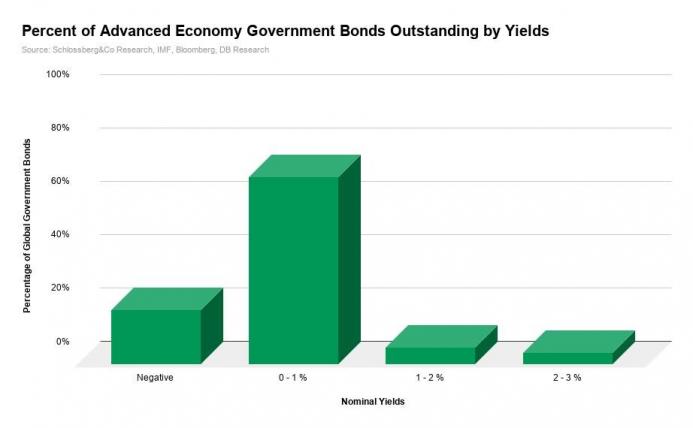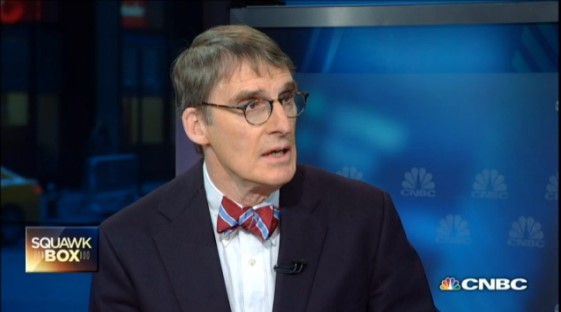By Dr Frank Shostak
Demand for a good arises because of its perceived benefit. For instance, individuals’ demand food because of the nourishment it offers them. This is however not so, with regard to the pieces of paper we call money – why do we accept them? According to Plato and Aristotle, the acceptance of money is a historical fact endorsed by government decree. It is government decree, so it is argued, that makes a particular thing accepted as the general medium of the exchange i.e. money. In his writings, Carl Menger raised doubts about the soundness of the view that the origin of money is a government proclamation. According to Menger,
An event of such high and universal significance and of notoriety so inevitable, as the establishment by law or convention of a universal medium of exchange, would certainly have been retained in the memory of man, the more certainly inasmuch as it would have had to be performed in a great number of places. Yet no historical monument gives us trustworthy tidings of any transactions either conferring distinct recognition on media of exchange already in use, or referring to their adoption by peoples of comparatively recent culture, much less testifying to an initiation of the earliest ages of economic civilization in the use of money.
Why conventional demand – supply analysis fails in explaining the price of money
So how does a thing that the government proclaims become the medium of the exchange, acquire purchasing power or a price? We know that the price of a good is the result of the inter-action between demand and supply. From this, we could reach a conclusion that the price of money is also set by the law of demand-supply.
Whilst demand for goods emerges because of the perceived benefit, with respect to money people demand it because of the purchasing power with respect to various goods. What we have here is that the demand for money depends on the purchasing power of money whilst the purchasing power of money depends on the demand for money.
We are caught in a circular trap. (The demand for money is dependent on its purchasing power whilst the purchasing power is dependent for a given supply on the demand for money). The circularity seems to vindicate the view that the acceptance of money is the result of the government decree.
Mises provides support to Menger’s insight
Support to Menger’s insight was provided by Ludwig von Mises’s regression theorem. By means of this theorem Mises not only succeeded in solving the money circularity problem, but he also confirmed Carl Menger’s view, that money could not have originated as a result of a government decree.
Mises began his analysis by noticing that today’s demand for money is determined by yesterday’s purchasing power of money. Consequently, for a given supply of money, today’s purchasing power of money is established. Yesterday’s demand for money in turn was fixed by the prior day’s purchasing power of money. For a given supply of money yesterday’s price of money was set. The same procedure applies to past periods.
However, this does not seem to solve the circularity problem, rather it appears to push it back to infinity. Not so, argues Mises. By regressing through time, we will eventually arrive at a point in time when money was just an ordinary commodity. Its price was set by the demand and supply for a commodity. The commodity had an exchange value in terms of other commodities i.e. its exchange value was established in barter.
On the day a commodity becomes money it already has an established purchasing power or price in terms of other goods. This purchasing power enables us to establish the demand for this commodity as money. This in turn, for a given supply, sets its purchasing power on the day this commodity starts to function as money.
Once the price of money is established, it serves as an input for the establishment of tomorrow’s price of money. It follows then, that without yesterday’s information about the price of money, today’s purchasing power of money cannot be established. Observe that with regard to other goods and services, history is not required to set present prices as demand for these goods arises because of the perceived benefits from consuming them. The benefit that money provides is that it can be exchanged for goods and services. Consequently, one needs to know the past purchasing power of money in order to establish today’s demand for it.
Using the regression theorem, we can infer that it is not possible that money could have emerged as a result of government decree. For the decree cannot bestow purchasing power upon a thing that the government proclaims will become the medium of the exchange.
According to Hans Hoppe,
Money must emerge as a commodity because something can be demanded as a medium of exchange only if it has a pre-existing barter demand.
Once a commodity becomes accepted as the medium of exchange it will continue to be accepted even if its non-monetary usefulness disappears. The reason for this acceptance is the fact that people now possess information about yesterday’s purchasing power, which enables the formation of demand for money today.
From commodity money to paper money
Originally, paper money was not regarded as money but just as a representative of money, which was gold. Various paper certificates were claims on gold stored with the banks. Holders of paper certificates could convert them into gold whenever it was deemed necessary. Since individuals found it more convenient to use paper certificates to exchange for goods and services, these certificates come to be regarded as money.
The introduction of paper certificates – that are accepted as the medium of exchange – opens the scope for fraudulent practice. Banks could be tempted to boost their profits by lending certificates that are not covered by gold.
In a free market economy, a bank which over issues its paper certificate will quickly find out that the exchange value of its certificate in terms of other banks certificates will fall. This drop in the exchange value will prompt individuals to convert the over issued bank paper certificates into gold in order to protect their purchasing power.
The over issuing bank however, will not have enough gold to honor all the issued paper certificates, and therefore will be declared bankrupt. The threat of bankruptcy therefore, serves to deter banks from issuing paper certificates unbacked by gold.
One can thus conclude that in a free market economy paper money cannot assume a “life” of its own and become independent of commodity money.
The central bank enforces the paper standard
The government could abolish by decree the convertibility of paper certificates into gold, thereby preventing over issuing banks from going bankrupt. Once however, banks are not obliged to redeem paper certificates into gold, this opens the scope for enormous profits. This generates incentive for the unrestrained expansion of the supply of paper certificates. The expansion of paper certificates could in turn produce hyperinflation and lead to the breakdown of the market economy.
To prevent breakdown, the enforcement of the paper money standard must be managed. The main purpose of managing the enforcement is to prevent various competing banks from over issuing paper certificates.
This can be achieved through the establishment of a monopoly bank i.e. central bank, which will manage the expansion of the paper money. In order to assert its authority the central bank introduces its own paper certificate, which replaces commercial banks certificates. The central bank’s certificate purchasing power is established because various commercial banks paper certificates, which carry purchasing power, are exchanged for the central bank certificate at a fixed exchange rate.
The central bank paper certificate, which is declared as legal tender i.e. money, also serves as the reserve asset for banks. This in turn sets a limit to banks credit expansion. It would appear that by means of monetary policies the central bank could now manage and stabilize the monetary system. This is however not the case – the paper standard must be constantly enforced to prevent its collapse.
This means an ongoing and ever growing monetary pumping by the central bank to keep the system “stable”. This however, leads to persistent declines in the purchasing power of money to boom-bust cycles, which in turn destabilizes the entire monetary system.
Conclusion
Mises’s regression theorem shows that money did not emerge because of government decree. The acceptance of money is dictated by its previous purchasing power. The regression theorem shows that the purchasing power is acquired because money originated as a commodity. The regression theorem also shows that paper money has a purchasing power because initially it was fully backed by a commodity i.e. gold.


